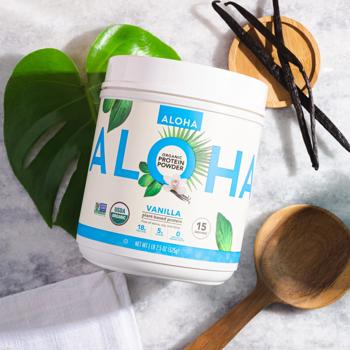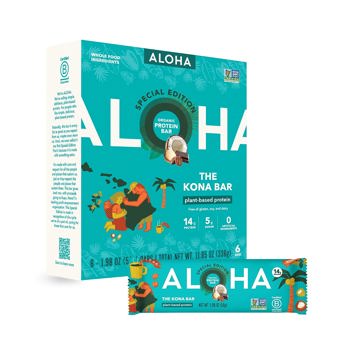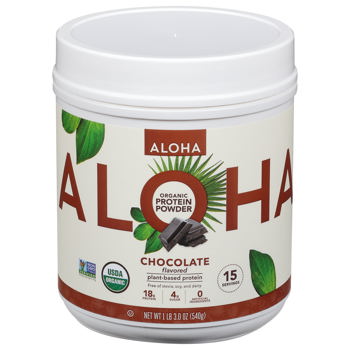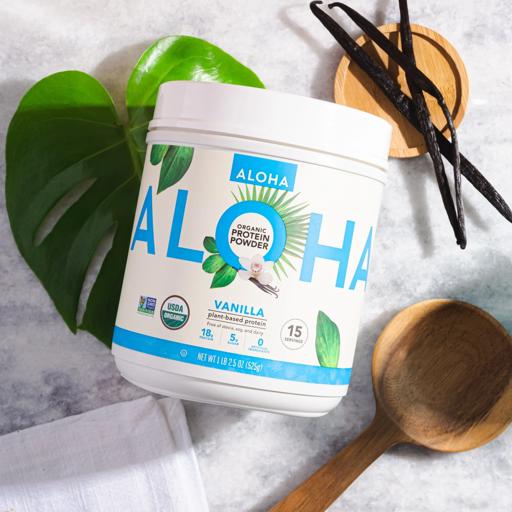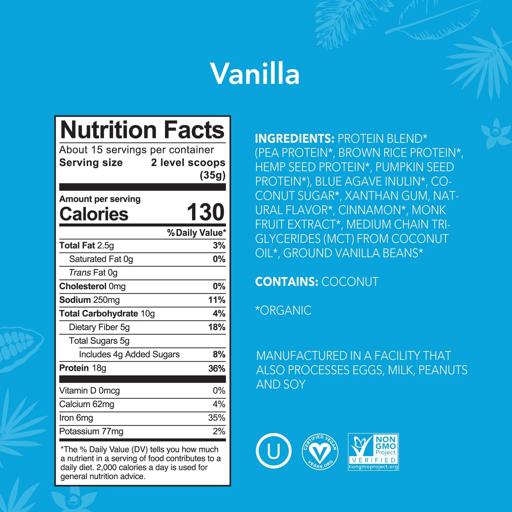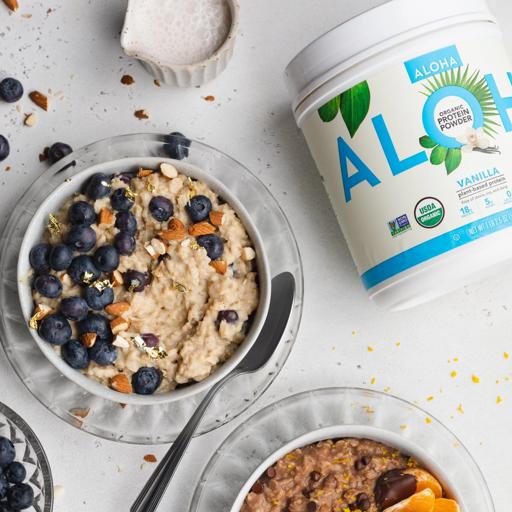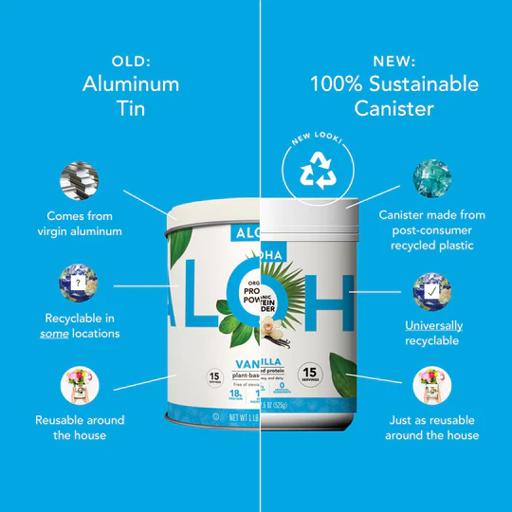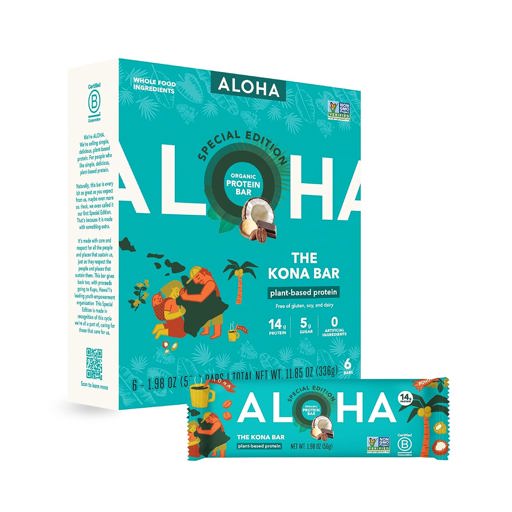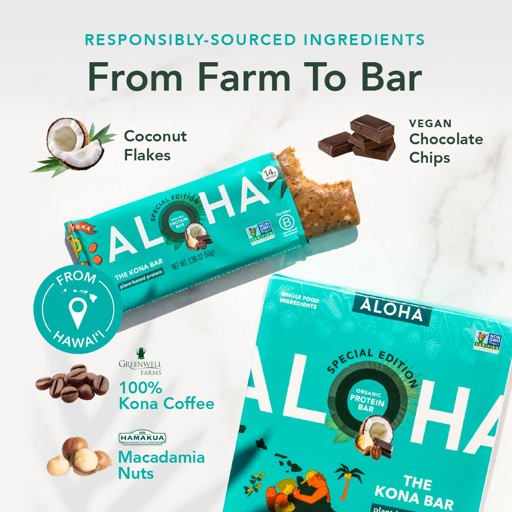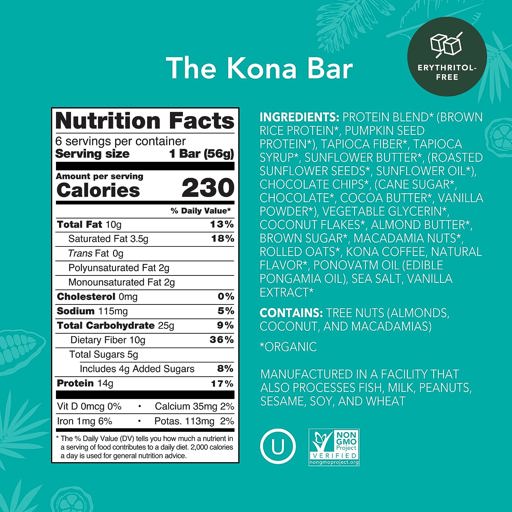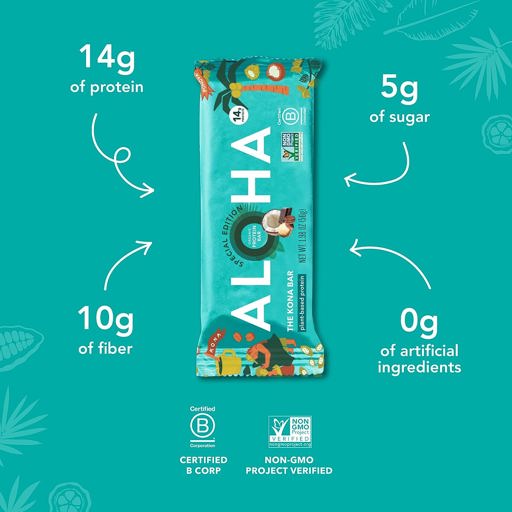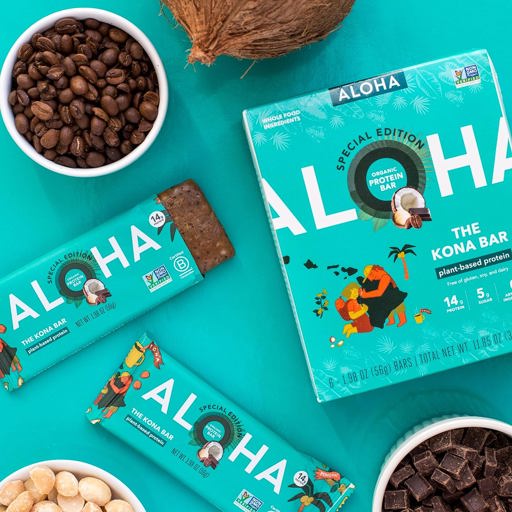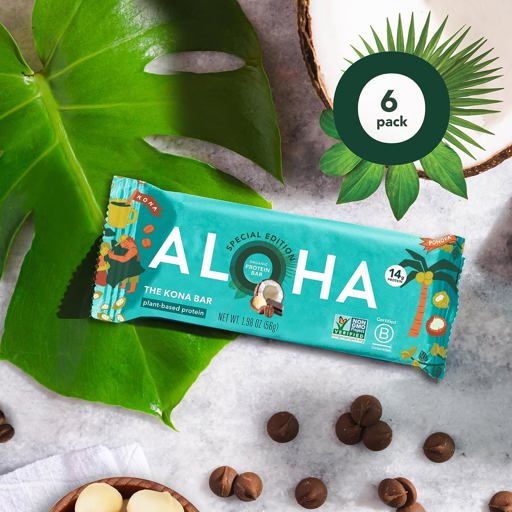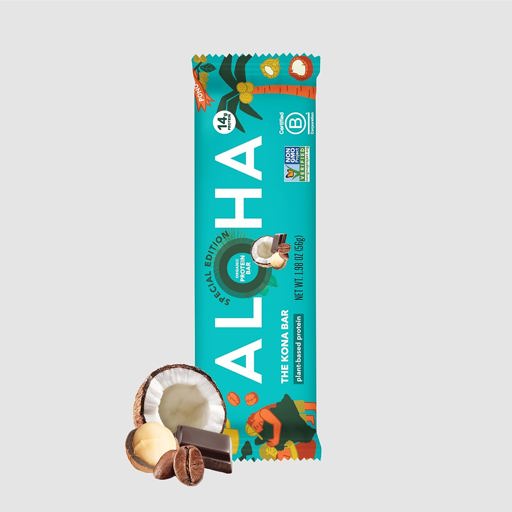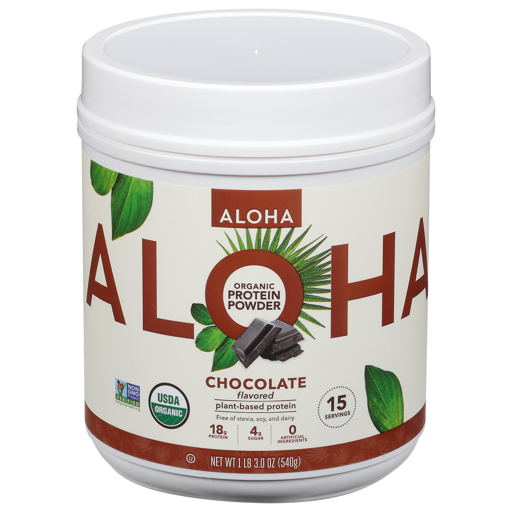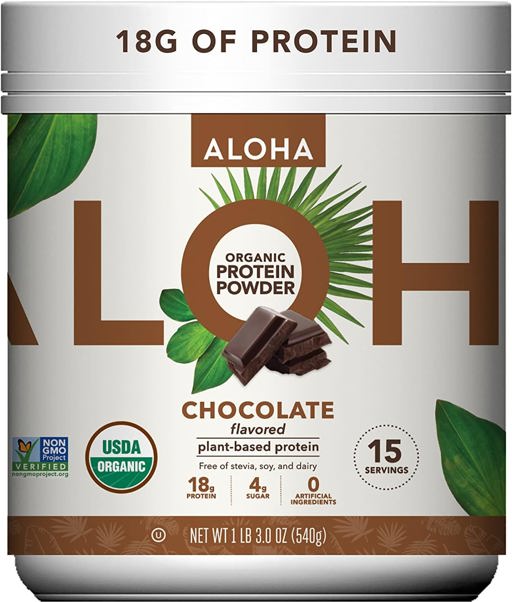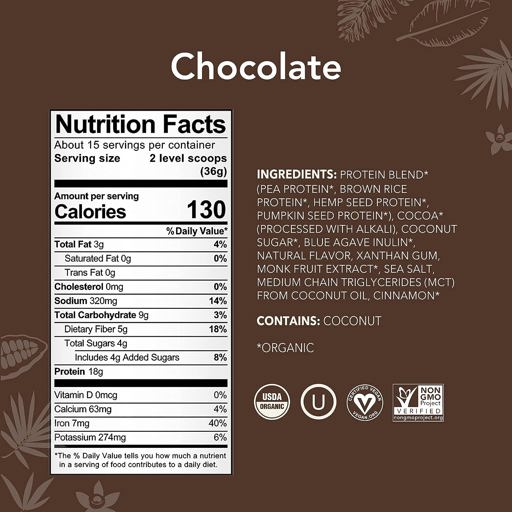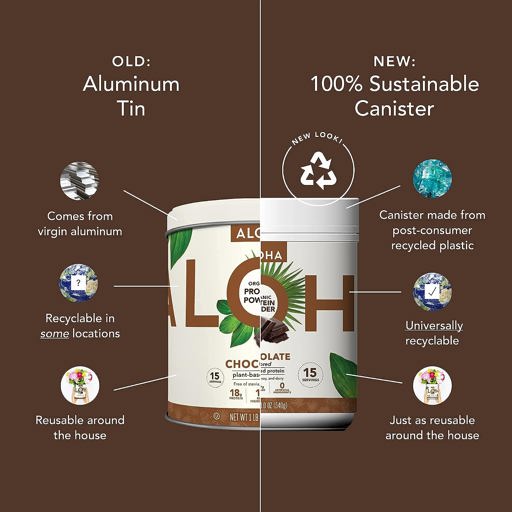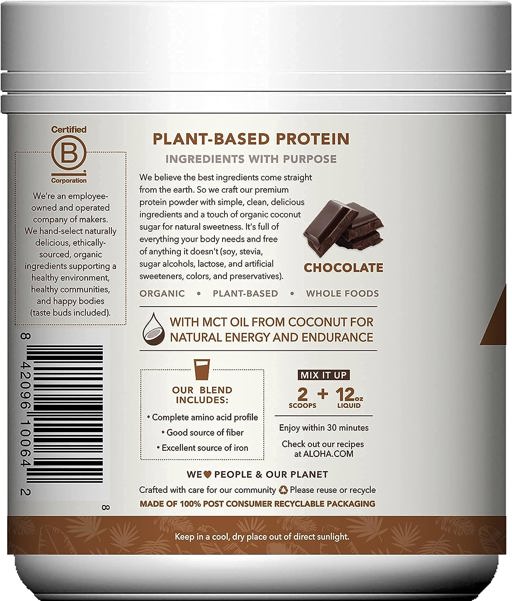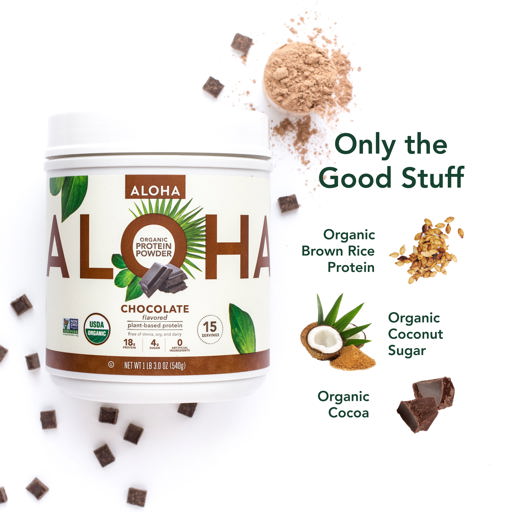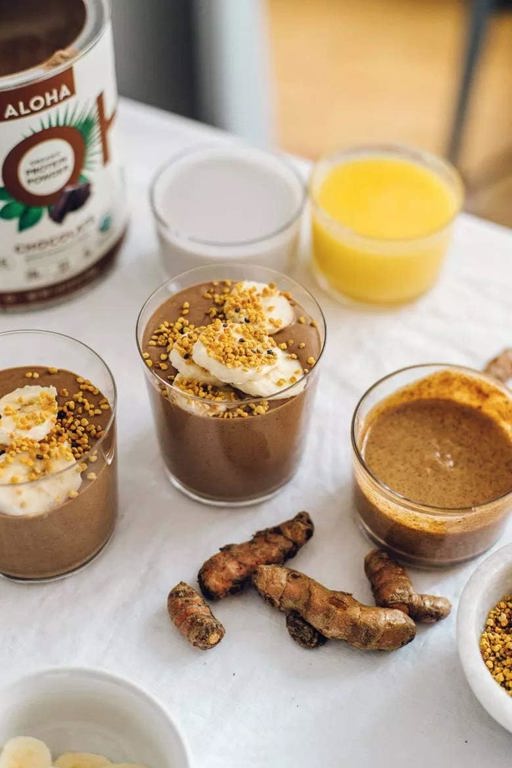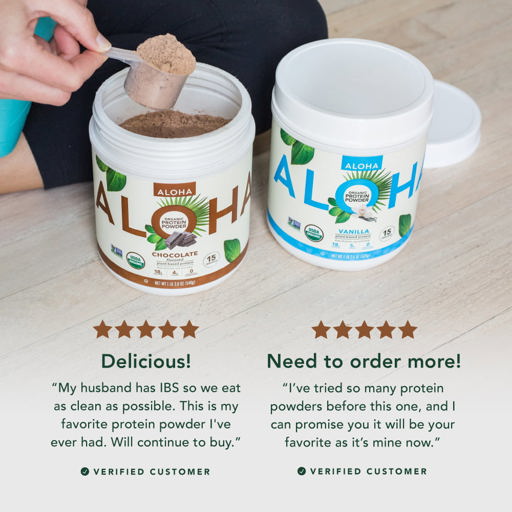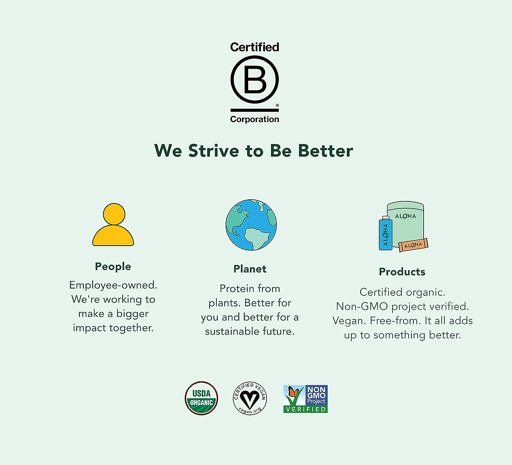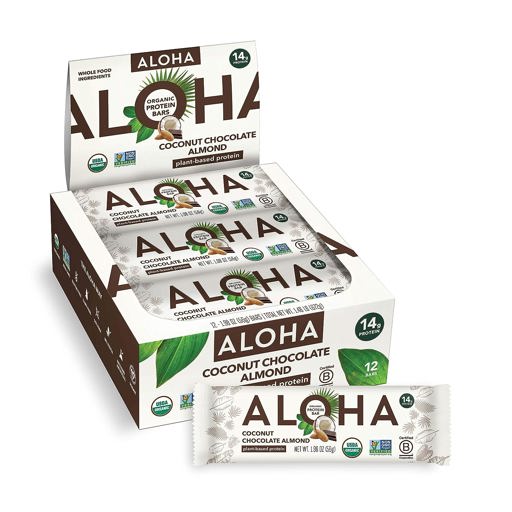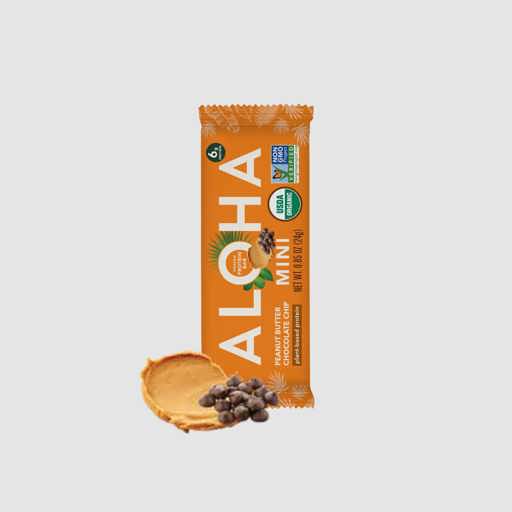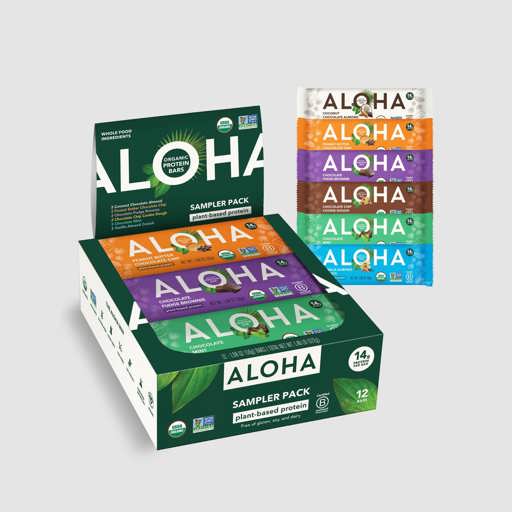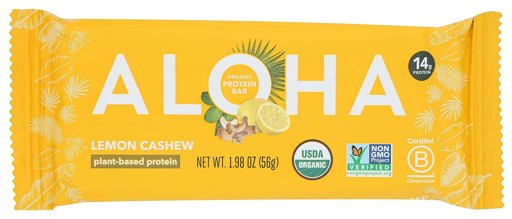Bestsellers for ALOHA Ingredients
Vanilla: the flavor that finds its way into our favorite smoothies, protein bars, and baked treats. But when you're reaching for that comforting vanilla taste, are you grabbing something flavored with real vanilla beans or opting for a product made with vanilla extract? The difference between these two can impact not only the taste of your food but also its nutritional value. In this article, we'll dive into what makes each type of vanilla unique, from how they're used in cooking to why choosing products with natural vanilla might be better for your health. Let’s explore how understanding this beloved flavor can help us make healthier choices on our wellness journeys.
What is Vanilla?
Vanilla comes from the vanilla bean, part of the orchid family, specifically from plants like Vanilla planifolia and Vanilla tahitensis. These beans are the primary source for natural vanilla extract, a favorite flavoring around the world. The process of turning these beans into the vanilla extract we love involves curing and drying them to develop their flavors. This natural extract is not just used in foods; it's also found in perfumes and pharmaceuticals, offering more than just a pleasant taste.
The cultivation of vanilla requires specific conditions, making it a labor-intensive crop. It's grown in several regions across the globe, with Madagascar and Indonesia being among the largest producers. The green beans harvested from the vanilla plant don't have any aroma or flavor immediately. They undergo an extensive fermentation process to bring out the characteristic vanilla scent and taste.
Natural vanilla extract contains vanillin as its main component, but it also includes several hundred other compounds that contribute to its complex flavor profile. This complexity is why natural vanilla is so highly valued in culinary applications. However, due to the high cost and limited supply of natural vanilla beans, synthetic versions of vanillin are often used as a substitute in many products.
Synthetic vanillin is made from more readily available materials, making it less expensive than its natural counterpart. While it can mimic the taste of real vanilla to some extent, it lacks the depth and richness found in natural extracts. For those looking for authentic flavor experiences and benefits beyond just taste, choosing products with real vanilla extract can make a difference.
In summary, whether you're enjoying a protein bar from ALOHA or baking at home, understanding the source of your vanilla flavoring can enhance your culinary experience. Opting for real vanilla not only supports sustainable agriculture but also ensures you're getting a product with a richer flavor profile and potential health benefits.
Cooking and Baking with Vanilla

When cooking and baking, the choice between vanilla flavoring and vanilla beans can significantly affect the outcome of your dishes. Vanilla beans provide a rich, complex flavor that enhances the taste of homemade cakes, cookies, and custards. On the other hand, vanilla extract, made from these beans, is more commonly used due to its convenience and ability to blend well in a variety of recipes.
For those who enjoy baking at home, using real vanilla beans can elevate simple recipes into gourmet treats. Scraping the seeds from a vanilla bean pod directly into your batter or dough releases tiny specks of pure flavor that can make a noticeable difference in the final product. This method works exceptionally well in recipes where vanilla is the star, such as vanilla bean ice cream or crème brûlée.
However, for everyday cooking and baking where vanilla plays a supporting role, natural vanilla extract offers a practical and flavorful alternative. It's important to note that while synthetic vanillin might be less expensive, it lacks the depth of flavor provided by natural extracts. This means that opting for products with real vanilla extract can enhance not just the taste but also the overall quality of your dishes.
Interestingly, studies have shown that in many baked goods where vanilla isn't intended to be the dominant flavor, there's little discernible difference between natural and imitation vanilla flavors. This suggests that for certain recipes, especially those with strong flavors or spices that might overshadow the vanilla, using an imitation extract could be an acceptable and cost-effective option.
Moreover, incorporating vanilla into your cooking doesn't just add flavor; it can also contribute to reducing sugar intake. As a sweet noncaloric flavoring, vanilla enhances sweetness without adding calories, making it a useful ingredient in healthier baking options.
In summary, whether you're reaching for a premium ALOHA protein bar flavored with real vanilla or experimenting with homemade desserts, understanding how to use different forms of vanilla can greatly impact both taste and nutritional value. Choosing real vanilla beans or extracts over synthetic versions ensures richer flavors and supports healthier eating habits.
What are Vanilla Extracts?

Vanilla extracts are a popular choice for adding flavor to foods and beverages. They are made by soaking cured vanilla pods in a mixture of ethanol (alcohol) and water. This process pulls the flavor from the beans into the liquid, creating an extract that meets specific standards set by the Food and Drug Administration (FDA). Vanilla extracts contain vanillin, which is the main flavor component, but they also have over 200 volatile constituents that contribute to their rich aroma and taste.
These extracts are not just about flavor; they're packed with polyphenols. Polyphenols are known for their health benefits, including antioxidant properties. This means using vanilla extract can add more than just taste to your food; it can also contribute positively to your health. The complex mix of tannins, polyphenol resins, free amino acids, and waxes in vanilla extracts makes them a valuable addition to a healthy diet.
While natural vanilla extract comes from the Vanilla planifolia orchid and is prized for its complex flavor profile, it's often more expensive due to the labor-intensive process of growing and curing vanilla beans. As a result, synthetic versions of vanilla extract are commonly used as a more affordable option. These synthetic extracts mimic the taste of real vanilla but are less complex, containing mainly vanillin or ethyl vanillin made from cheaper materials.
For those who prioritize authentic flavors and health benefits in their cooking and baking, choosing products with real vanilla extract is beneficial. It ensures you're getting a product with a richer flavor profile that supports healthier eating habits. For example, ALOHA's plant-based protein products use real vanilla extract to ensure customers enjoy both delicious taste and nutritional advantages.
In summary, whether you're enhancing your morning smoothie or baking a batch of cookies, incorporating vanilla extract can elevate your culinary creations while offering potential health benefits. Opting for natural vanilla extract over synthetic versions ensures you're enjoying authentic flavors along with added nutritional value.
What is in Vanilla Flavoring?

Vanilla flavoring is a common ingredient in many of our favorite foods and drinks, but what exactly goes into it? Unlike natural vanilla extract, which comes from the cured pods of the Vanilla planifolia orchid, vanilla flavoring often contains synthetic compounds designed to mimic the taste and aroma of real vanilla. These synthetic versions are created from various chemicals and are used widely due to their lower cost and consistent supply.
The main component of most vanilla flavorings is synthetic vanillin, which is chemically identical to the vanillin found in natural vanilla extract. However, synthetic vanillin lacks the complex array of other aromatic compounds present in natural vanilla. This means that while it can provide a similar basic flavor, it doesn't offer the same depth or richness as its natural counterpart. Synthetic vanillin is typically produced from guaiacol or lignin, which are by-products of the paper industry or derived from petrochemicals.
Some vanilla flavorings may also contain ethyl vanillin, which is chemically different but has a stronger, albeit slightly different, vanilla taste compared to vanillin. Ethyl vanillin adds to the sweetness and intensity of the flavor profile but still does not replicate the full spectrum of flavors found in natural vanilla extract.
For health-conscious consumers and parents looking for wholesome ingredients in their foods, understanding these differences is crucial. Opting for products made with real vanilla extract can ensure you're consuming a more natural product with a richer flavor profile. This choice supports not just better taste but also aligns with healthier eating practices by avoiding synthetic additives.
In addition to vanillin and ethyl vanillin, other chemicals might be added to vanilla flavorings to enhance stability or mimic other minor aromatic compounds found in natural vanilla. However, these additives do not contribute any health benefits and may not be desirable for those seeking clean eating options.
Choosing products like ALOHA's plant-based protein bars that use real vanilla extract ensures you enjoy delicious taste along with nutritional advantages. It's an easy way to incorporate healthier choices into your busy lifestyle without compromising on flavor or quality.
Why Real Vanilla Beans Are Better

Real vanilla beans offer a depth of flavor and health benefits that synthetic versions or lower-quality extracts simply can't match. The active compounds in vanilla, such as vanillin and isoeugenol, have been shown to possess anti-filarial properties, which can help treat infections. This makes real vanilla beans not just a choice for superior taste but also for their potential health advantages. Additionally, the antioxidants found in natural vanilla extract, including vanillic acid and vanillin, protect the body from damage by harmful components like free radicals and toxins. These antioxidants contribute to overall wellness by supporting the body's defense system against oxidative stress.
The process of cultivating vanilla is labor-intensive, requiring precise conditions for growth and a meticulous pollination process that is often done by hand. This effort contributes to the scarcity and higher cost of real vanilla beans. However, it also means that products made with real vanilla are often of higher quality, with farmers benefiting from certifications such as organic, fair-trade, and Rainforest Alliance Certification. These certifications not only ensure a better product for consumers but also support sustainable and ethical farming practices.
During the curing process of vanilla beans, chemical and enzymatic reactions occur that produce the distinctive flavor and aroma profiles unique to real vanilla. This complex process results in a richness that synthetic versions or extracts derived from lower-quality beans cannot replicate. For example, V. pompona bean is considered of lesser quality and is more commonly used in fragrance production rather than culinary applications.
Choosing products made with real vanilla beans ensures you're enjoying not only a superior taste experience but also reaping potential health benefits. It supports sustainable agriculture and ethical farming practices, making it a choice that benefits both the consumer and the global community. For busy professionals and parents who prioritize health-conscious eating without compromising on flavor, opting for products like those from ALOHA that use real vanilla beans can make all the difference in maintaining a balanced diet while enjoying delicious foods.
How to Tell If Your Food Contains Real Vanilla

Determining whether your food contains real vanilla or a synthetic substitute is crucial for those who value natural ingredients and their health benefits. Real vanilla comes from the pods of the Vanilla planifolia orchid and contains a complex array of compounds that contribute to its rich flavor and aroma. Here are some tips to help you identify if your food uses real vanilla:
- Check the ingredient list: Look for terms like "vanilla bean," "natural vanilla," or "vanilla extract." These indicate that the product likely contains real vanilla. Avoid products that list "vanillin" or "artificial flavor" as these are synthetic substitutes.
Price: Products made with real vanilla are generally more expensive due to the labor-intensive process of growing and harvesting vanilla beans.
Flavor profile: Real vanilla has a complex, rich flavor that synthetic versions can't fully replicate. If the vanilla flavor in your food is overly sweet or one-dimensional, it might be artificial.
Label certifications: Products that use real vanilla may also carry certifications like USDA Organic or Non-GMO Project Verified, which can indicate higher quality ingredients.
Brand reputation: Companies committed to natural and organic products, such as ALOHA, are more likely to use real vanilla in their offerings.
Transparency: Brands that prioritize natural ingredients often provide detailed information about their sourcing and production processes either on their packaging or website.
Appearance: In some products, like ice cream or yogurt, you might see tiny black specks; these are actual seeds from the vanilla pod, indicating real vanilla has been used.
Health claims: Real vanilla contains antioxidants and other beneficial compounds not found in synthetic versions. Products highlighting these health benefits may be using genuine vanilla extract.
By paying attention to these details, consumers can make informed choices about the foods they eat, ensuring they enjoy not only the superior taste of real vanilla but also its potential health advantages.
FAQ

How does the climate affect vanilla bean cultivation?
Vanilla beans require a specific climate to grow — warm, humid, and with moderate rainfall. Because of these requirements, vanilla is primarily grown in a narrow band around the equator. The climate greatly affects the yield of vanilla crops, making vanilla prices volatile when there are climate disruptions.
What is the shelf life of natural vanilla extract?
Natural vanilla extract, being a concentrated form of the vanilla bean infused in alcohol, has an almost indefinite shelf life when stored properly. It should be kept in a cool, dark place, like a pantry, and tightly sealed to maintain its quality.
Can I grow my own vanilla beans at home?
Growing vanilla beans at home is possible but challenging. The plant requires high humidity, warm temperatures year-round, and indirect sunlight. Even in ideal conditions, it may take years for a plant to produce beans, and hand pollination is typically necessary since the natural pollinator of the vanilla flower is a specific type of bee native to Mexico.
Why are vanilla beans so expensive?
The high cost of vanilla beans is due to the labor-intensive nature of vanilla cultivation and processing. Each flower must be pollinated by hand, and the beans require several months to mature. After harvest, beans undergo a lengthy curing process to develop their flavor. Market demand and climate conditions can also affect prices.
Is organic vanilla better than non-organic vanilla?
Organic vanilla is grown without synthetic pesticides and fertilizers, a preference for those seeking to minimize their exposure to chemicals. The taste between organic and non-organic vanilla might not differ significantly, but choosing organic supports sustainable farming practices.
How does the vanilla curing process work?
After harvesting, vanilla beans undergo a curing process that lasts several months. This process involves blanching, sweating, drying, and conditioning the beans. These steps slowly develop the beans' characteristic flavor and aroma by facilitating enzymatic reactions within the beans.
What is the difference between Bourbon and Tahitian vanilla?
Bourbon vanilla, from the Vanilla planifolia species, is grown in the Indian Ocean islands, including Madagascar. It has a traditional, rich vanilla flavor. Tahitian vanilla, from the Vanilla tahitensis species, grown in the Pacific Islands, including Tahiti, has a more floral and fruity flavor profile.
Can vanilla consumption provide health benefits?
Vanilla contains antioxidants which can protect bodily cells from damage. However, the amount of vanilla typically consumed in foods is small, so while it contributes to nutritional variety, vanilla alone is unlikely to have a significant impact on health.
Is there a vegan alternative to vanilla extract that uses alcohol?
Vanilla extract traditionally contains alcohol, but for those looking for alternatives, alcohol-free versions are available. These use glycerin instead of alcohol as the solvent and are suitable for vegans and those avoiding alcohol for personal or religious reasons.
How can you ensure vanilla farmers receive fair compensation?
Supporting brands and products with fair trade certification is one way to ensure that vanilla farmers receive fair compensation for their labor. Fair trade practices help to improve trading conditions and promote sustainability, ensuring farmers are paid a fair price for their harvest.
ALOHA does not provide medical advice, diagnosis, or treatment. Any information published on this website or by this company is not intended as medical advice. Always consult a qualified health or mental health professional with any questions or concerns about your physical or mental health.
ALOHA Buying Guide

Vanilla Protein Powder
ALOHA Organic Plant-Based Protein Powder is a vegan protein powder with 18g of clean, organic, plant-based protein per pouch. It contains 200mg omega-3s and provides an excellent source of magnesium & iron. It is also USDA Certified Organic Non-GMO, Gluten-Free, Dairy-Free, Soy-Free and Vegan.
The ALOHA Organic Plant-Based Protein Powder is an ideal supplement for those looking to promote lean muscle development. Each pouch provides 18g of clean, organic, plant-based protein alongside 200mg of omega 3s and essential minerals such as magnesium and iron. This vegan protein powder is also certified organic by the USDA meaning it contains no preservatives or artificial ingredients. It is also gluten free, dairy free, soy free and vegan friendly! All these features make the ALOHA Organic Plant Based Protein Powder an easy choice for anyone looking for a healthy source of nutrition.
- Organic and Plant-Based ingredients promote a healthier lifestyle
- The delicious Vanilla flavor adds a sweet touch to your protein shakes
- As it is a Protein Powder, it helps in muscle recovery and growth
- A good source of protein for those on a vegan or vegetarian diet
- At 1.14 Pounds (518g), it provides a good quantity that lasts for an extended period
- Packaging is sturdy and ensures the product remains fresh
- The product is easy to mix with water, milk, or any preferred beverage without forming lumps.
The Kona Bar (Pack of 6)
ALOHA's Organic Plant Based Protein Bars are vegan, low sugar, gluten free, paleo friendly and contain 14 grams of USDA organic plant-based protein.
The ALOHA Organic Plant Based Protein Bars are a delicious and healthy snack option. They are made with local ingredients from Hawai’i such as 100% Kona Coffee, 100% Hawai’i-grown Macadamia Nuts and Ponova oil from O'ahu's North Shore. The bars contain 14 grams of USDA organic plant-based protein as well as 10g of fiber and only 5g of sugar per bar, making them an excellent choice for those looking for a nutritious snack. Furthermore, the bars are vegan, Non-GMO, gluten free snacks that are Soy-Free, Dairy-Free and Stevia-Free. Finally, 10% of proceeds from the bars will be donated to Kupu to support agricultural education programs in Hawaii – a nice touch!
- Organic Plant Based Protein: Consumers love the fact that these bars are made from organic plant-based protein, making them a great source of protein for vegans and vegetarians.
- Special Edition Kona Flavor: The unique Kona flavor is a hit among customers, who appreciate the novelty and taste of this special edition.
- Low Sugar: Customers appreciate that these bars are low sugar, making them a healthier snack option.
- Gluten Free and Paleo: These bars are gluten free and paleo, which fits perfectly into the dietary needs of many consumers.
- Non-GMO: The fact that these bars are Non-GMO is highly valued by consumers who are careful about their food choices.
- Free from Stevia, Soy and Erythritol: Customers value the absence of Stevia, Soy and Erythritol in these bars, making them a clean eating option.
- Low Carb: The low carb count is appreciated by customers who are watching their carbohydrate intake or following a keto diet.
Chocolate Protein Powder
Plant-Based Protein Powder with Organic Chocolate, Keto Friendly, Vegan, Gluten Free, Non-GMO, Stevia Free & Erythritol Free, Soy Free, Dairy Free and Only 4g Sugar.
This Plant-Based Protein Powder is an excellent choice for those looking for a healthy and delicious way to get their daily protein intake. It is vegan and contains no soy or dairy meaning it can be enjoyed by most dietary restrictions. Plus it is keto friendly with only four grams of sugar per serving! It also contains MCT oil giving it a boost of natural energy that will keep you going throughout the day. Finally, this product is free from both stevia and erythritol making it a great choice for those who want to avoid artificial sweeteners.
- Plant-Based: The protein powder is vegan-friendly, making it suitable for those following a plant-based lifestyle.
- Keto Friendly: With MCT Oil included, it is ideal for those on a ketogenic diet.
- Low Sugar: Containing only 4g of sugar, it's an excellent option for people looking to limit their sugar intake.
- Gluten and Soy Free: This product is perfect for those with dietary restrictions as it's free from gluten and soy.
- Dairy Free: Being dairy-free makes it an excellent choice for lactose-intolerant individuals or those avoiding dairy.
- Non-GMO: The protein powder is non-GMO, indicating a commitment to natural ingredients and health.
- Free from Stevia and Erythritol: This product does not contain stevia or erythritol, making it a great choice for those who prefer to avoid these sweeteners.

